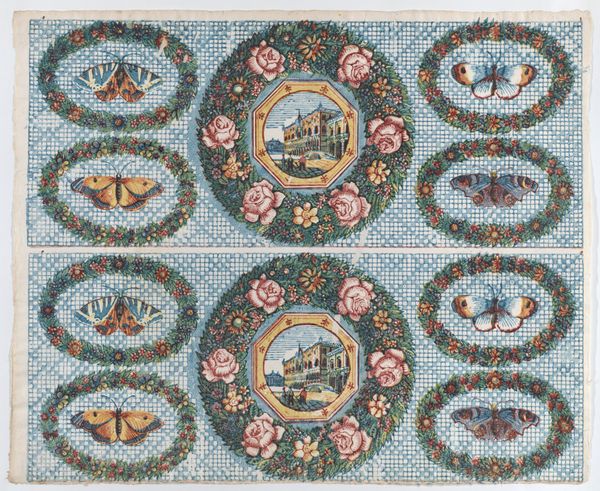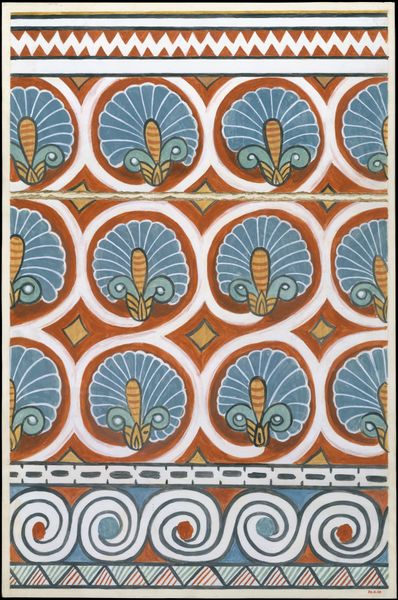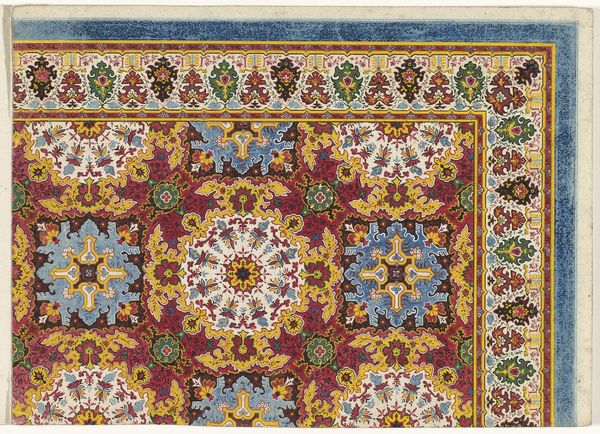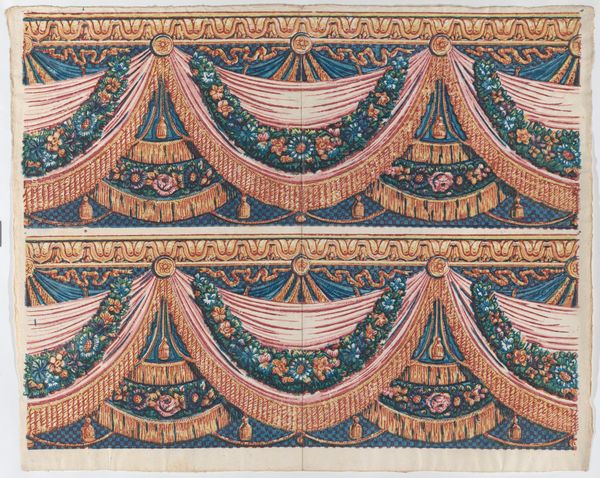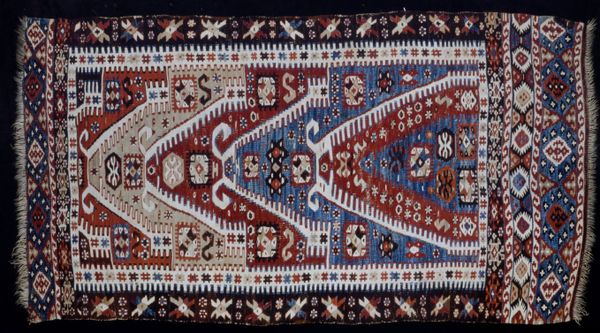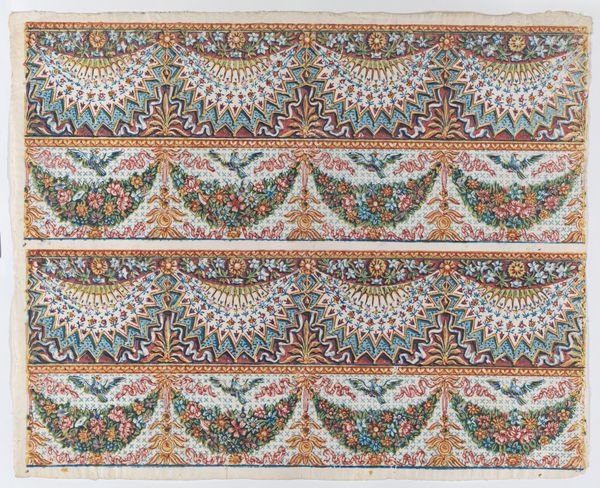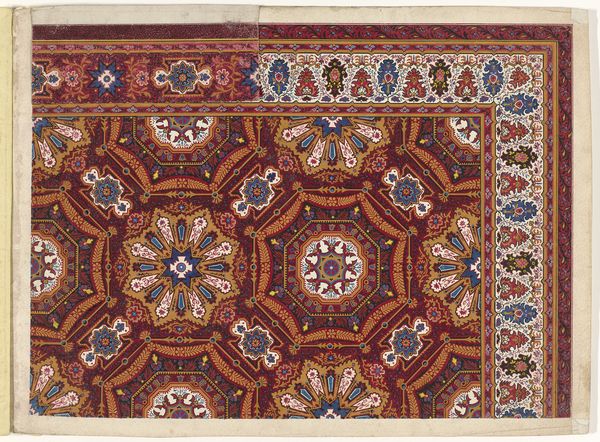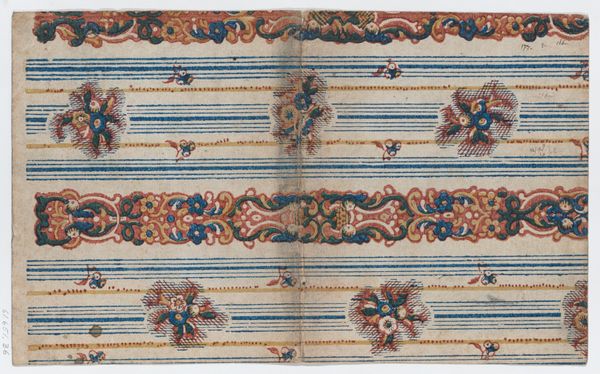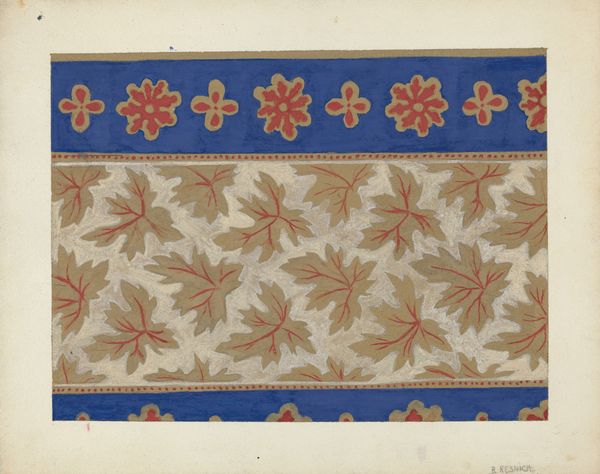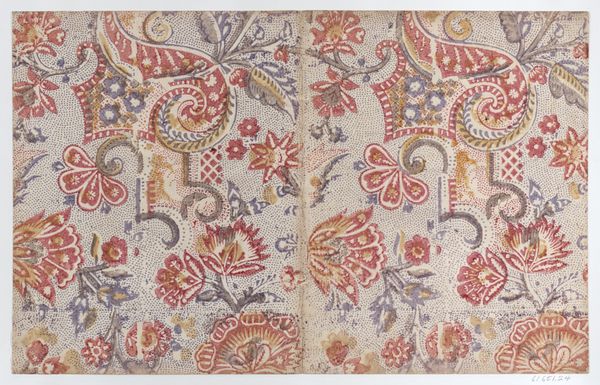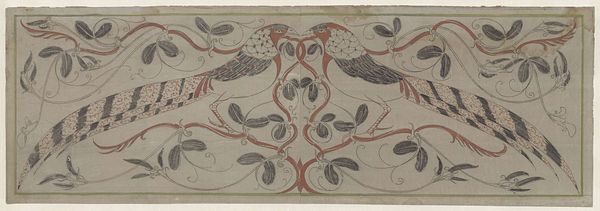
print, textile
# print
#
textile
#
geometric pattern
#
abstract pattern
#
england
#
decorative-art
Dimensions: 544.8 × 60.7 cm (214 1/2 × 23 7/8 in.) Warp repeat: 40.6 cm (16 in.)
Copyright: Public Domain
Curator: At the Art Institute of Chicago, we have this stunning furnishing fabric, simply titled "Panel," created in 1856 by Lancaster Prints. Its original use, of course, would have been in the home, likely as drapery. Editor: It feels immediately opulent, doesn’t it? A little gothic almost, despite the pretty butterflies. All that detail against the deep black background creates a sense of enclosed luxury, don't you think? Curator: Absolutely. Think of the cultural context. Mid-19th century England was intensely interested in naturalism, and these detailed insect motifs fit right into the popular aesthetic of the time. However, you see how formalized they are. Editor: Yes, they’re far from naturalistic, aren't they? Mass produced geometric forms hinting at nature. But notice the borders framing those creatures – the small butterfly friezes above and below the wider butterfly panel are interesting culturally: a neat containment of what may have been perceived at the time as a dangerous form. The ordered butterflies speak to a desire to master the wild kingdom through decor. Curator: It's fascinating how that fear manifests in the aesthetics. And notice the tension within the design itself: The highly structured patterns create an impression of stability, even as the organic forms suggest transformation, almost chaotic growth. Think about butterflies and their association with transformation, metamorphosis! Editor: A subtle point, I’d agree. One might say Lancaster Prints captures the Victorian ambivalence toward a changing natural world with astonishing graphic insight! The contrast is also so strong: black and bright, small butterflies with their simplified geometric shapes juxtaposed against larger and more complex ones, and everything is contained by severe framing edges. Curator: Precisely. And that very containment also speaks to the democratizing power of industrial production. It made detailed patterns and images once accessible only to the very wealthy available to a much broader public. Editor: The paradox of democratized luxury! Still resonant today, really, when one considers luxury consumer brands. In any event, seeing the piece has enriched my view of what butterflies symbolize at different moments of cultural history. Curator: For me, it’s that tension between manufactured order and natural chaos captured in cloth— a testament to anxieties about change. It really underscores how design can be a lens through which we see deeper cultural forces at play.
Comments
No comments
Be the first to comment and join the conversation on the ultimate creative platform.
